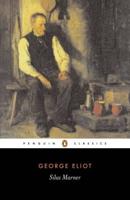Publisher's Synopsis
Excerpt from Both Sides the Border: A Tale of Hotspur and Glendower
The four opening years of the fifteenth century were among the most stirring in the history of England. Owen Glen dower carried fire and slaughter among the Welsh marches, captured most of the strong places held by the English, and foiled three invasions led by the king himself. The northern borders were invaded by Douglas, who, after devastating a large portion of Northumberland, Cumberland, and Durham, was defeated and taken prisoner at the battle of Homildon by the Earl of Northumberland and his son Hotspur. Then followed the strange and unnatural coalition between the Percys, Douglas of Scotland, Glendower of Tales, and Sir Edmund Mortimer - a coalition that would assuredly have overthrown the king, erected the young Earl of March as a puppet monarch under the tutelage of the Percys, and secured the independence of Tales, had the royal forces arrived one day later at Shrewsbury, and so allowed the confederate armies to unite. King Henry's victory there, entailing the death of Hotspur and the capture of Douglas, put an end to this formidable insurrection; for although the Earl of Northumberland twice subsequently raised the banner of revolt, these risings were easily crushed; while Glendower's power waned, and order, never again to be broken, was at length restored in Wales. The continual state of unrest and chronic warfare between the inhabitants of both sides of the border was full of adventures as stirring and romantic as that in which the hero of the story took part.
About the Publisher
Forgotten Books publishes hundreds of thousands of rare and classic books. Find more at www.forgottenbooks.com
This book is a reproduction of an important historical work. Forgotten Books uses state-of-the-art technology to digitally reconstruct the work, preserving the original format whilst repairing imperfections present in the aged copy. In rare cases, an imperfection in the original, such as a blemish or missing page, may be replicated in our edition. We do, however, repair the vast majority of imperfections successfully; any imperfections that remain are intentionally left to preserve the state of such historical works.









